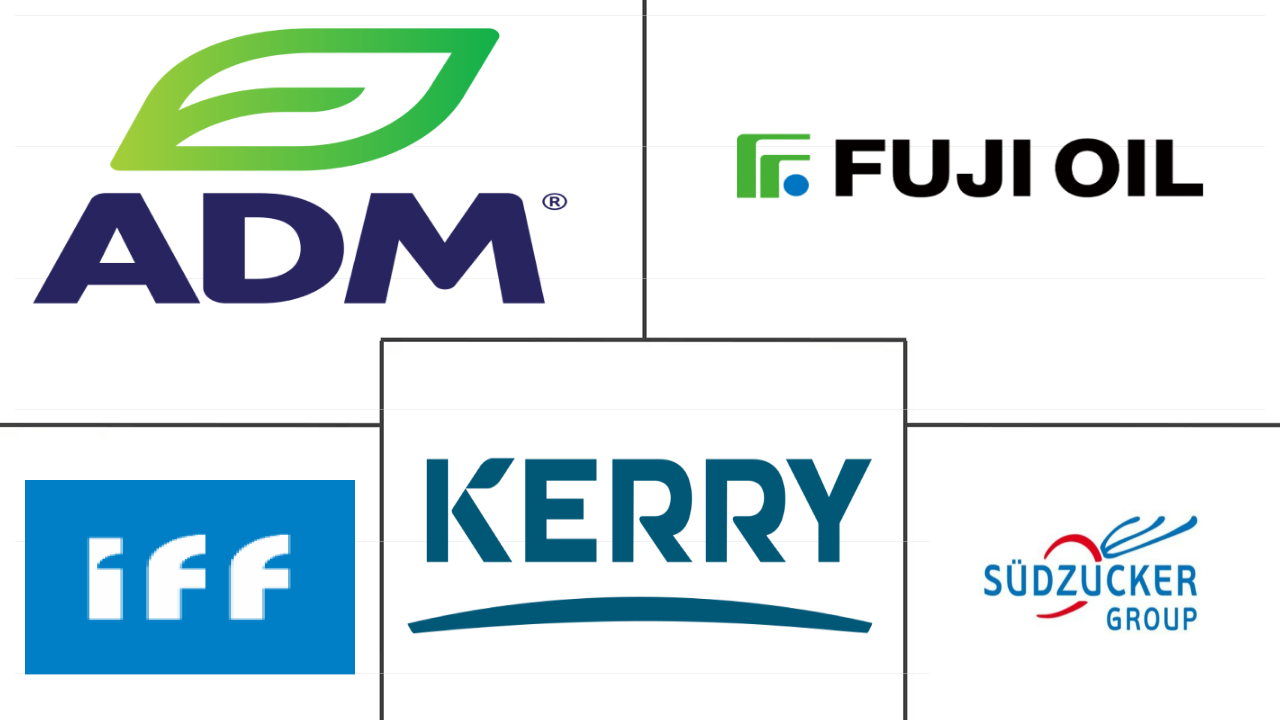Market Size of asia-pacific plant protein ingredients Industry
| Icons | Lable | Value |
|---|---|---|
|
|
Study Period | 2017 - 2029 |
|
|
Market Size (2024) | USD 4.40 Billion |
|
|
Market Size (2029) | USD 5.88 Billion |
|
|
Largest Share by End User | Food and Beverages |
|
|
CAGR (2024 - 2029) | 5.96 % |
|
|
Largest Share by Country | China |
Major Players |
||

|
||
|
*Disclaimer: Major Players sorted in no particular order |
Asia-pacific Plant Protein Ingredients Market Analysis
The Asia-pacific Plant Protein Ingredients Market size is estimated at 4.40 billion USD in 2024, and is expected to reach 5.88 billion USD by 2029, growing at a CAGR of 5.96% during the forecast period (2024-2029).
4.40 Billion
Market Size in 2024 (USD)
5.88 Billion
Market Size in 2029 (USD)
5.51 %
CAGR (2017-2023)
5.96 %
CAGR (2024-2029)
Largest Market by Product Type
58.89 %
value share, Soy Protein, 2023
Soy protein overpowers all the plant protein types due to its high protein content, low viscosity, and solubility, which caters to its extensive use in all sectors.
Largest Market by End User
61.08 %
value share, Food and Beverages, 2023
The meat and beverage industries drove the F&B sector due to the functionality of plant proteins in such products and the rising demand for vegan meals in the region.
Fastest Growing Market by Product Type
6.73 %
Projected CAGR, Pea Protein, 2024-2029
Pea proteins are gaining demand from meat alternatives due to their quick rehydration, neutral flavor, and texturizing abilities, which has led to a slew of new products.
Fastest Growing Market by End User
6.48 %
Projected CAGR, Animal Feed, 2024-2029
The high accessibility, cost-effectiveness, and apt amino acid profile of plant proteins, especially soy and wheat proteins, make it the fastest-growing segment.
Leading Market Player
7.71 %
market share, Archer Daniels Midland Company, 2021

Archer Daniels Midland Company is constantly developing new plant proteins, and its differentiated product portfolios are the most important factor for its success.
F&B and animal feed together holds major share in usage of plant protein with growing vegetarian population coupled with numerous functionality associated with it
- By application, the food and beverage industry is the leading application sector for plant proteins in the region. The increasing demand for protein functionalities and awareness about protein-rich diets primarily drives the demand for proteins in the F&B industry. Under the F&B segment, the meat/poultry/seafood and meat alternative products sub-segment accounted for the major volume share of 44.2% in 2022. Plant proteins can replace meat, making meat products available for vegan consumers in the region. The region is highly dominated by the consumer base in China, followed by India, the region with the highest vegetarian population in the world. Proteins such as soy, wheat, and rice proteins have the maximum market share in the segment.
- However, the snacks sub-segment is the fastest-growing sub-segment, projected to record a CAGR of 6.81%, by value, during the forecast period. By protein, soy protein holds significant demand in the category. Studies showed that soy protein snacking improves appetite control and diet quality among teenagers, thus driving its demand. It also offers tremendous versatility in snack compositions, with up to 25g of protein per serving.
- The animal feed segment is the second leading segment, and it is projected to register a CAGR of 6.11%, by value, during the forecast period. Plant proteins have numerous advantages like pea protein can be fed to various livestock species, such as ruminants, poultry, pigs, and aquafeed and pet food. The demand for plant proteins is increasing in feeds due to their functionalities, such as providing the binding required for the pellet or granule forms of feed (their water insolubility decreases pellet breakdown).
China dominates the market with consumer inclination towards plan-based food and beverages coupled with strong production capacity of soy protein drove the application across the region
- China led plant protein demand in 2022. With plant proteins emerging as a sustainable protein option involving no animal cruelty, they are gaining popularity among environmentalists and the vegan population. Fueling concerns over carbon emissions and the food crisis have further propelled the market's growth. By application, the food and beverage sector is the leading application sector for protein in the region, accounting for a major volume share of 53.4%, followed by the animal feed industry, with a 53.4% volume share, in 2022. Animal feed is also projected to be the fastest-growing segment in the overall plant proteins market, with a CAGR of 9.10%, by value, during the forecast period (2023-2029).
- Demand was also influenced by significant investments made in the plant-based space. In 2018, firms ventured to invest in Haocan Food Service Management Co. Ltd to develop a chickpea-based snack product. Later in the same year, InnovoPro raised a fund of USD 4 million to produce plant-based protein ingredients.
- Considering the highly competitive environment in the plant-based business, the Asia-Pacific region witnessed the highest Y-o-Y growth rate of 12.43%, by value, in 2020. However, Malaysia is projected to be the fastest-growing country in terms of value, witnessing a CAGR of 6.38% during the forecast period (2023-2029). In terms of consumption, the market was followed by India, majorly driven by the F&B sector. In 2022, the sector captured a share of 52%, by volume, in the country. The rising vegan population is demanding more plant-based products. For instance, series of vegan tours in mid-2018, the global tour operator based in Australia saw a rise in interest for such tours held in India, Thailand, and Italy.
